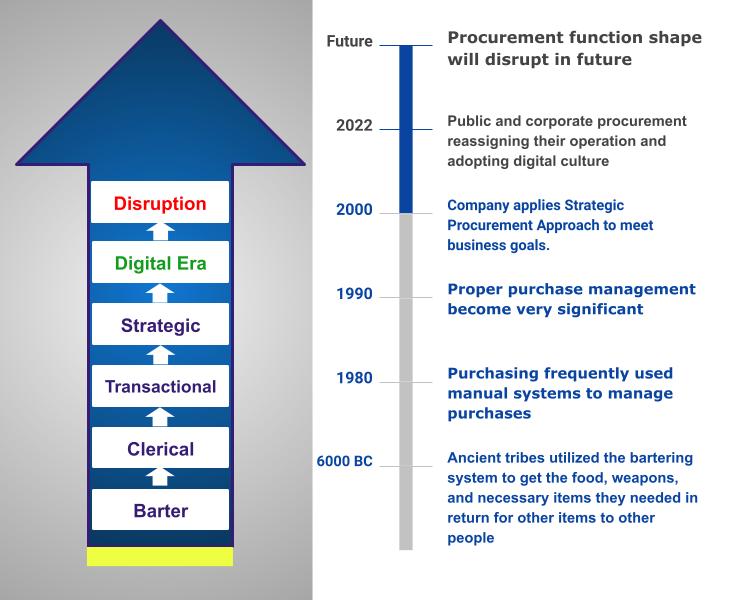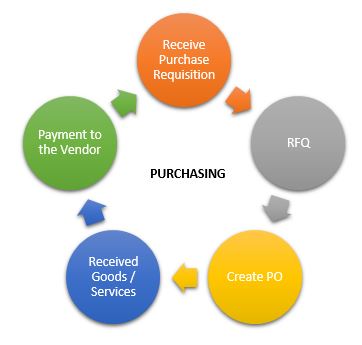Ancient tribes acquire goods through barter system and purchasing evolved from
it. Purchasing been addressed in companies in 1990s and it’s developed as
Procurement / Strategic Sourcing in 2000s. In 2022s, Procurement transformed
to Digitalization and in future, it’s disrupting shape of the department
operations.
History of Purchasing: Past, Present and Future
back in 6000 BC. Bartering involves the provision of a goods or service by
one people or family in return for another agreed goods or service from
another people or family. They adopted it in their society. These ancient
people utilized the bartering system to get the food, weapons, and necessary
items they needed in return for other items to other people. 13th
Century
13th Century
Historically tracing back this activity one finds that in the Clay Tables of
the 13th century B.C. inscribed in the days of the Phoenician Traders refer to
persons serving as ‘Purchasing Agents’. Ancient purchase orders written on
parchment scrolls in the days of Julius Ceasar called for delivery of amphoras
of wine, honey and oil.
18th Century
Purchasing has long been considered one of the basic functions common to all
organizations. Only during the past two centuries has purchasing been
addressed in trade and textbooks. In 1832 Charles Babbage addressed the topic
in his book titled on The Economy of Machinery and Manufacturing. He points to
the need for a ‘materials man’ in the mining sector who selects, purchases and
tracks goods and services required.
Purchasing Revolution
1960 – 70
During the sixties and seventies purchasing frequently used manual systems to
manage purchases. The buyers’ major focuses were purchase price and prevention
of stoppage of production. The typical department had a series of junior and
senior buyers, clerks, supervisors and a purchase manager. By the end of the
decade of 1970 the marketplace had become more international from both a
marketing and supply point of view. Computer began to help in the purchasing
management.
1900
Competitive pressures increased in the 1990s and the impact of proper purchase
management of goods and services on the company assets became very significant
and very visible. Purchasing had become more strategic.
Procurement Strategic Approach
2000
Purchasing shift to Procurement in 2020s. Strategic Procurement process
applies in an organization that aims to plan properly to buy product or
service at right price, quality, timely supply and mitigate supply risks to
meet the organization’s business goals.
Procurement Digitalization
2022
COVID-19 Pandemic caused millions of deaths, making it one of the deadliest in
history. Global Supply Chain and business brutally effects in pandemic. Many
businesses shut their operation which hits to laid off many jobs. In 2022,
businesses are transformed digitally. Online business has boosted their
revenues and generating employments. Public and corporate procurement
reassigning their operation and adopting digital culture.
Procurement Disruption: The Future Procurement
Procurement function shape will disrupt in future. Repetitive and non-critical
activities will be done through robots with the help of artificial
intelligence (AI), internet of things (IoT), chatbots and machine learning. Be
ready to adopt the future Procurement. In a word where most procurement
experiences are available at the touch of a button.
Related readings: Difference between Purchasing and Procurement



